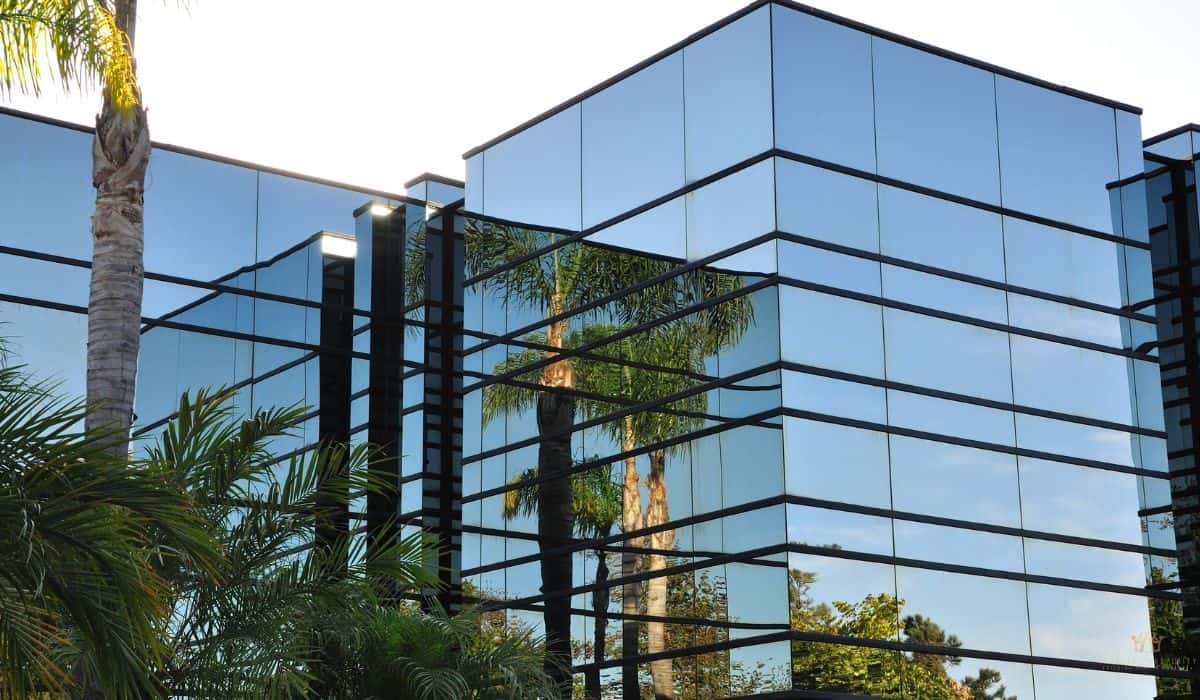Did you know that strong demand and limited new supply have pushed retail property vacancy rates to some of their lowest levels in years? In early 2025, it’s hovering around just 4.1% That’s great news for property owners. However, it also raises the stakes.
Retail properties that aren’t maximizing their potential could quickly fall behind in a highly competitive market.
From our experience, developing a smart repositioning strategy for retail properties is essential to create new energy, attract tenants, and secure long term value.
In this guide, we’ll walk through effective strategies that help property owners, commercial real estate investors, and shopping center managers breathe new life into underutilized spaces.
You’ll learn how to spot repositioning opportunities, plan improvements that align with market trends, and build stronger revenue streams for the future.
If you’ve already explored our insights on office space value-add redesign strategy, you’ll find this retail-focused article just as actionable. If you’re curious about what’s next, we’ll soon be breaking down an industrial property value-add modernization playbook too.
For a broader view of how to upgrade different types of assets, don’t miss our full value-add commercial real estate strategy resource, where we connect the dots across sectors.
Let’s start!
Short Summary
- Retail property repositioning is about adjusting a space to meet current market demands and consumer preferences.
- Conducting a detailed market analysis helps identify opportunities before making physical changes.
- Developing a strong vision, optimizing tenant mix, and adding value through upgrades are key repositioning strategies.
- Common challenges like financing, tenant disruption, and zoning hurdles can be managed with good planning and community engagement.
- Phased implementation helps control risk and maintain positive cash flow during repositioning projects.
Understanding The Fundamentals Of Retail Property Repositioning
Getting repositioning right isn’t about crossing fingers and hoping for the best. It’s about understanding the full picture, from strategic repositioning to recognizing when a retail property needs a serious refresh.
Let’s look into the essentials so you can spot opportunities, make smarter moves, and create real long term value.
What Is Strategic Repositioning For Retail Properties And Commercial Real Estate?
Strategic repositioning means upgrading retail properties or commercial real estate to better match what the target market wants and what today’s market trends demand.
Sometimes it’s a full-blown overhaul. Other times, small shifts in the tenant mix or outdoor spaces can totally change the game. We’ve seen, for instance, a dated shopping center shift gears by bringing in boutique fitness studios and local cafés, resulting in foot traffic skyrocketing.
Understanding “Highest And Best Use” In Retail Spaces
Every retail space has a sweet spot where it generates the most value. That’s what we call its “highest and best use.” A space that’s sitting empty might have once been a popular big-box store.
Now? It could thrive as a mixed use hub with coworking spots, quick-service restaurants, and pop-up shops.
There had also been cases where a large anchor tenant left, and instead of chasing another department store, the property owners reimagined the site to appeal to the growing e-commerce pick-up crowd. It worked out beautifully.
Key Indicators Your Property Needs Repositioning
When foot traffic starts dipping or higher vacancy rates become the new normal, it’s a pretty loud alarm bell. Same thing when tenants start pulling out faster than you can backfill spaces.
In one situation, for example, we noticed vacant storefronts piling up after a competing center opened nearby. That pushed us to rethink the center’s layout, rebrand, and offer new services that drew in more customers.
How Market Trends And Consumer Preferences Influence Repositioning
Consumer preferences shift fast. People want experiences, not just transactions. Market analysis showed us that experiential elements like food halls, live events, and green gathering spaces are pulling more people into shopping centers.
We’ve also found that blending office and residential uses into former big-box stores taps into the growing demand for mixed use developments.
Keeping a close eye on the competitive landscape and adjusting based on solid data is key. Guesswork doesn’t cut it anymore. It’s all about research, planning, and bold moves that create real results.
Conducting A Thorough Market Analysis As The First Step
Before a hammer swings or a wall gets painted, serious groundwork has to happen. Market analysis gives you the roadmap.
Without it, repositioning a retail property can feel like throwing darts in the dark. Let’s break down the essentials you’ll need to nail this critical first step.
Why Market Analysis Comes Before Physical Changes
Jumping straight into renovations without understanding the market dynamics is a fast track to blowing your budget. It’s smarter to base every design and leasing decision on hard data.
For example, an investor scoped out a shopping center that seemed like a great flip. Thanks to a trade area analysis, it was revealed that the local target market preferred service-based tenants over traditional retail. Good thing that detail was caught early!
Components Of Trade Area Analysis And Identifying The Target Market
Knowing your trade area inside and out is crucial. It’s about mapping where potential customers live, work, and shop. Key elements include:
- Demographics: Age, income levels, education.
- Consumer behavior: What they buy, how often, and where.
- Traffic patterns: How people move through the area.
- Retail leakage: Where money is flowing out of the community.
A trade area analysis also helps pinpoint the target market. Say, if young professionals dominate, it may make more sense to gear towards fitness centers and fast-casual dining rather than discount stores.
Techniques For Analyzing The Competitive Landscape
You’ve got to know who else is in the game. We recommend:
- Visiting competing shopping centers to see their tenant mix.
- Reviewing occupancy rates and foot traffic patterns.
- Checking if any mixed use developments or major adaptive reuse projects are coming soon.
For example, if a trendy food hall nearby is draining all the weekend crowds, that’s a good reason to pivot and specialize your offering.
Determining Potential For Mixed Use Or Adaptive Reuse
Not every spot should stay retail. Some properties scream for an upgrade into mixed use or another adaptive reuse project. Look for signs like:
- Strong demand for residential units in the area.
- Lack of coworking or office spaces nearby.
- Zoning flexibility that makes redevelopment easier.
Consider: A site is showing slow retail leasing. However, apartment demand nearby is booming. Instead of forcing another strip mall, repositioning into a small mixed-use hub makes way more sense, and can pay off big time.
Implementing Effective Repositioning Strategy For Retail Properties
Once the groundwork is done, it’s time to roll up our sleeves and bring the vision to life. A solid repositioning strategy for retail properties should match current trends while also setting the property up for long-term success.
Here’s how we tackle it:
Developing A Vision That Aligns With Market Trends
Creating a strong vision starts with understanding what people actually want today, and not just what worked five years ago.
For instance, before focusing on high-end boutiques for a project, study the market analysis first. It may make more sense to build around local, experience-driven brands.
- Study shifting consumer behaviors, like the preference for social spaces.
- Align renovations with economic drivers, like remote work or lifestyle retail.
- Avoid chasing yesterday’s hot trends. Plan for what’s coming next.
Exploring Tenant Mix Optimization Strategies
A well-balanced tenant mix is important for building a destination. If every tenant is the same type of store, the property won’t pull diverse crowds. Some key ideas include:
- Blend different categories: retail, service, dining, and entertainment.
- Anchor around experiences like gyms, food halls, or specialty grocers.
- Match tenants to the target market identified in your trade area analysis.
For example, a repositioned shopping center can drastically improve its chances after mixing a coworking space with cafes and pop-up retail shops.
Value-Adding Improvements To Boost Property Appeal
Small upgrades can drive big returns. Based on past observations, some top improvements to consider are:
- Upgrading building systems (HVAC, lighting, energy efficiency).
- Enhancing outdoor spaces with seating, shade, and gathering areas.
- Improving signage and access points for better visibility.
When these details are tuned up, customer satisfaction and retention gets a major lift.
Adaptive Reuse Options To Maximize Property Potential
Sometimes, the best move is a bold one. If traditional retail isn’t cutting it, adaptive reuse is a smart pivot. Options include:
- Converting vacant boxes into office hubs or coworking spaces.
- Turning underused areas into residential lofts.
- Creating service-oriented hubs with health clinics, pet care, or education spaces.
Repositioning done right can turn a half-empty strip mall into a lively health and wellness center, and with soaring occupancy rate.
Creating Mixed Use Developments For Long-Term Success
Blending uses creates a built-in ecosystem of activity. Mixed use developments add value in ways single-purpose properties can’t compete with.
Think about:
- Adding apartments above ground-level retail.
- Integrating small-format offices with casual dining.
- Creating flexible spaces that can evolve with community needs.
No doubt, the combination of living, working, and shopping in one place keeps the foot traffic flowing and the cash registers ringing.
Overcoming Common Challenges In Retail Property Repositioning
Even the best-laid plans can hit a few bumps during a repositioning strategy for retail properties. Staying flexible and prepared makes all the difference.
Here’s a closer look at a few common hurdles and how to navigate them smoothly:
Tackling Financing Obstacles With Creative Funding Solutions
Securing capital for repositioning can feel like a full-time job. Traditional lenders sometimes hesitate if the property’s current numbers don’t impress. Many owners can secure funding by:
- Partnering with private equity groups or family offices.
- Applying for redevelopment grants tied to economic revitalization.
- Structuring bridge loans tied to future income projections.
Exploring non-traditional sources often leads to faster, more flexible solutions.
Minimizing Disruption To Existing Tenants
Keeping tenants happy during upgrades is nice, but it’s also smart business. A repositioning plan should always consider how work impacts daily operations. Good practices might include:
- Scheduling heavy construction during off-peak hours.
- Setting up clear signage and safe access pathways.
- Offering rent concessions when necessary.
For example, a retail plaza might schedule noisy work early mornings and keep the lunch rush interruption-free, which helps to retain key tenants.
Navigating Zoning And Regulatory Hurdles
Zoning headaches can throw a wrench into repositioning if they aren’t tackled early. We recommend:
- Consulting local zoning officers before finalizing designs.
- Hiring land-use attorneys when projects involve major use changes.
- Preparing detailed documentation to speed up approvals.
A repositioning effort can turn around quickly by working with the city early and adjusting plans based on initial feedback.
Managing Community Expectations And Building Support
Community buy-in can turn a project from tolerated to celebrated. Smart repositioning strategies usually:
- Host informational sessions for nearby residents and businesses.
- Highlight benefits like new jobs, green space, or improved services.
- Stay transparent throughout the construction phases.
A developer can win support by promising a community plaza, and most importantly, delivering on it early.
Phased Implementation To Manage Risk And Cash Flow
Trying to reposition everything at once can stretch budgets thin and cause major headaches. Phased plans help reduce risk and smooth out cash flow. A smart approach involves:
- Prioritizing revenue-generating upgrades first.
- Keeping parts of the property operational during construction.
- Staging investments to match leasing progress.
For instance, repositioning a shopping center in phases kept tenants happy while new leases rolled in to fund additional improvements.
Final Thoughts
Smart repositioning strategy for retail properties takes more than just a fresh coat of paint. It demands research, creativity, and a good read on what people really want.
From our experience, repositioning gets the best results when each step, from market analysis to tenant mix is handled with care.If you’re ready to dive deeper into strategies that help you add value and stay ahead, we invite you to check out our homepage for more insights and resources that can help you hit the ground running.
Frequently Asked Questions
What Is Retail Property Repositioning?
Retail property repositioning means updating a property’s use, design, or tenants to better match market needs and improve profitability. It’s a way to breathe new life into older spaces without starting from scratch.
How Do I Know If A Retail Property Needs Repositioning?
Signs include falling foot traffic, growing vacancy rates, or tenants struggling to attract customers. Shifting local demographics or market trends can also be major clues.
What Are Some Effective Tenant Mix Strategies For Repositioning?
A strong tenant mix blends national brands with local favorites to create a dynamic, community-driven experience. Adding service-based tenants like fitness centers or medical offices can also boost daily traffic.
How Important Is Market Analysis Before Repositioning?
It’s critical. Without clear insights into the trade area, target market, and local competition, repositioning plans can easily miss the mark. Good research sets the foundation for successful upgrades.






